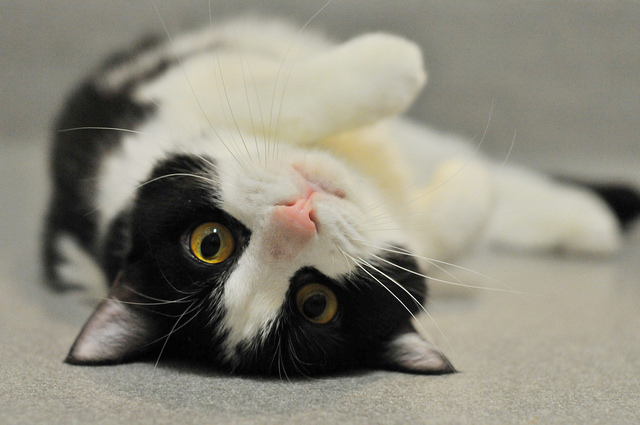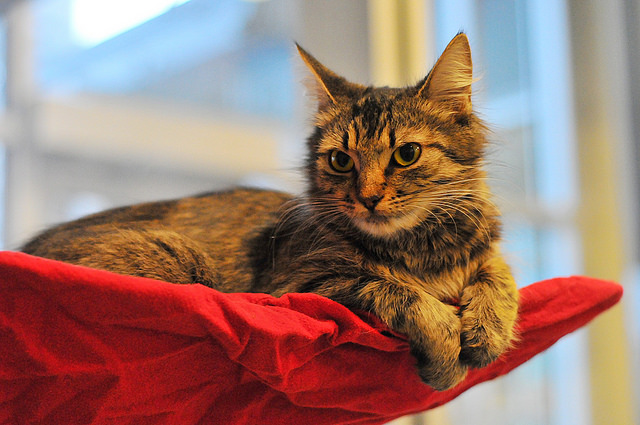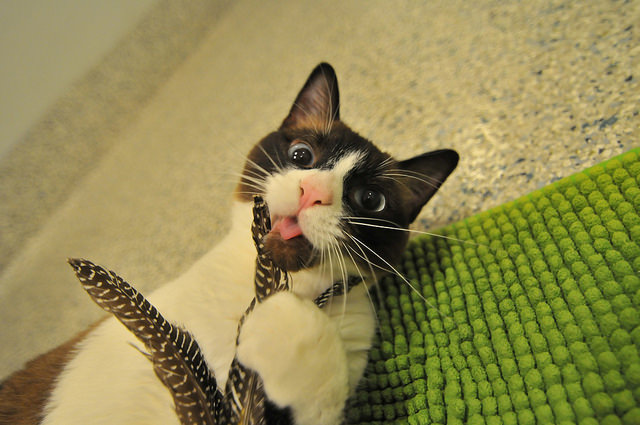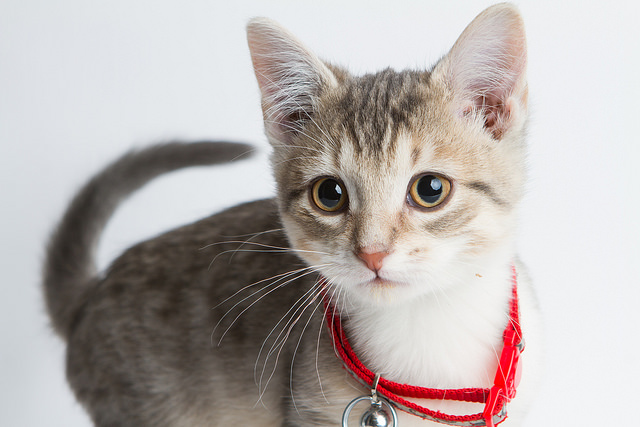Indoor cats
Tips for a Happy and Healthy Indoor Kitty

Cats crave familiarity, structure and routine, which is exactly what an indoor life has to offer, with the added bonus of safety from all the dangers that await them outside! By ensuring your cat has the necessary home environment, proper diet, enrichment items, and interactive play, your cat can live a long and happy life indoors.
Outdoor cat? You can transition her indoors — here’s how:
- Take it slow. Some cats may adjust easily, while some may seem very upset and yowl, scratch at exits, or try to run out the door. This is normal.
- Get kitty used to a litter box. If your cat has never used a litter box or a scratch post before, get her accustomed to using these items before bringing her inside by making them accessible to her outside.
- Make kitty’s indoor time extra special. Bring your cat indoors during positive times, such as meal or treat time. Once your cat is comfortable eating in your home, begin to engage in play sessions with a wand toy rather than placing her back outside as soon as she wants to go out. Offer her a comfy bed for a nap after she has eaten and played.
- Work up to longer indoor time. If your cat is bolting for the door, try tossing treats or kibble in the opposite direction of the door.
- Never use punishment as a way to keep your cat indoors. Punishment (hitting, yelling etc.) will only cause your cat distress and will make her fearful of you — making outside seem like a much better living arrangement.

How to make life indoors attractive to your kitty
Whether your cat is already a strictly indoor cat or a newly transitioned one, you will want to ensure your home has all the items your cat requires to keep her feeling safe and mentally stimulated. This includes:
- A refuge room where your cat can go to feel safe during times of anxiety (loud noises, unfamiliar visitors, construction, etc.);
- Places to climb and perch, such as a cat tree or a window perch;
- An appropriate scratch post;
- Solo toys that can keep kitty entertained on her own, such as toy mice, ping pong balls and even paper bags;
- A litter box that is kept well cleaned, as cats have meticulous litter box preferences; and,
- Interactive toys, such as cat wands, that can be used by you during play time with your pet.
Always remember to check toys for safety and never leave your cat unsupervised to play with toys with string, feathers or other pieces she may chew off and swallow.

Getting the most from interactive play time
Interactive play time is an important part of an indoor cat’s life. Interactive play builds confidence, relieves stress and frustration, and allows for bonding time with kitty’s favourite person: you.
- Select an interactive toy that really appeals to your cat and stimulates their prey drive, such as a cat wand.
- Once you have found the perfect toy, move it in a manner that triggers your cat’s prey drive; depending on the toy, this may be moving through the air or on the ground, or alternating between high and low. Quiver the toy, have it peek out from behind couch — have as much fun with it as your cat is!
- Always allow kitty to pounce on the toy and catch it occasionally.
- When play time is almost over, begin to wind down your movements so your cat doesn’t stay in a state of high-arousal.
- Interactive play should be done with your cat two to three times daily.

Safe, supervised outdoor time
There are ways to allow your cat to experience the outdoors in a safe, supervised way.
Leash-walking and outdoor enclosures are both great options to allow your cat to be safely outdoors, but remember — if allowing your cat outdoors for these brief periods of time ignites her desire to be outside all of the time and leads to dashing or door scratching behaviour, it is best to keep her inside and use more interactive play instead.
